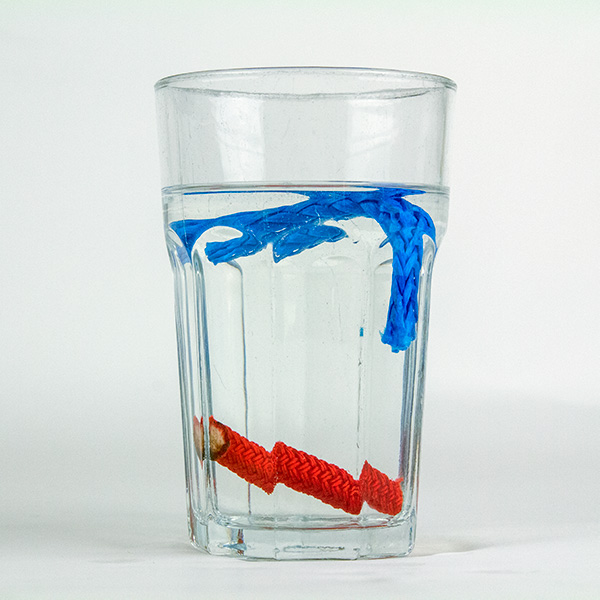How do I recognise the material of my sheets and halyards?

How do I recognise the material of my sheets and halyards?
There are many different types of ropes in sailing. And it is not always easy to recognize what kind of ropes there are on a boat. Certainly not if the ropes have been used for a while. But how do you know what material a rope is made of?
There are many different types of construction and materials for ropes. This makes many combinations possible. However, it appears that only a few types of constructions and materials are common on boats.
Constructions
In general it is obvious what kind of construction a rope has. We often see a plaited construction (3-strand and 8-strand) in mooring lines and anchor lines. Most other ropes are braided. That means that a rope has a core and a cover. Sometimes there is a 3rd or intermediate cover. In principle, this intermediate cover is a way to make a rope thicker without, for example, using an expensive material.
Materials
So far it's pretty easy. But what about the materials. Let's again take a look at the most common materials. These are polyester and Dyneema®. We have explained the difference between these two in a separate blog.
But how do you recognize polyester or Dyneema®? Especially in old and used ropes this is difficult. The cover is easy. It is usually made of polyester, or a combination of polyester fibre and another fibre. The Dyneema® fibre is too smooth to use as a cover. This will cause the ropes to slip in the stopper.
This means that we have to identify the core material. First of all, take a good look at the core. Just remove a small piece of the cover and the core is visible. If the core comes away from the cover easily this usually is an indication of a super fibre like Dyneema®. Dyneema is smooth and will not attach itself to the cover. Also a core made of Dyneema® fibre is often a bit stiffer and has a clear coated layer. If the material is very different from the cover, it is often a different material. In this case the core is probably made from Dyneema® fibres. You can find out for sure by doing a little test.
Float test
Cut a small piece of the core of the line you want to test. Then take a glass of water and put the material into the glass. If the material sinks, it is most likely polyester. If it floats, the material is Dyneema®.
You can actually do the same test for mooring lines. However, the types of material here are different. Mooring lines are often made from polyester or polypropylene.
Polyester is flexible, strong, UV resistant and sinks. Polypropylene is cheap, stiff, hardens under UV, cracks and floats

Rope selector
Are you looking for a comprehensive advice for ropes? Our Rope-Selector tool advises you for every type of rope you use on a sailing yacht or motor boat. We have taken stretch, flexibility, creep, strength and durability into account.

